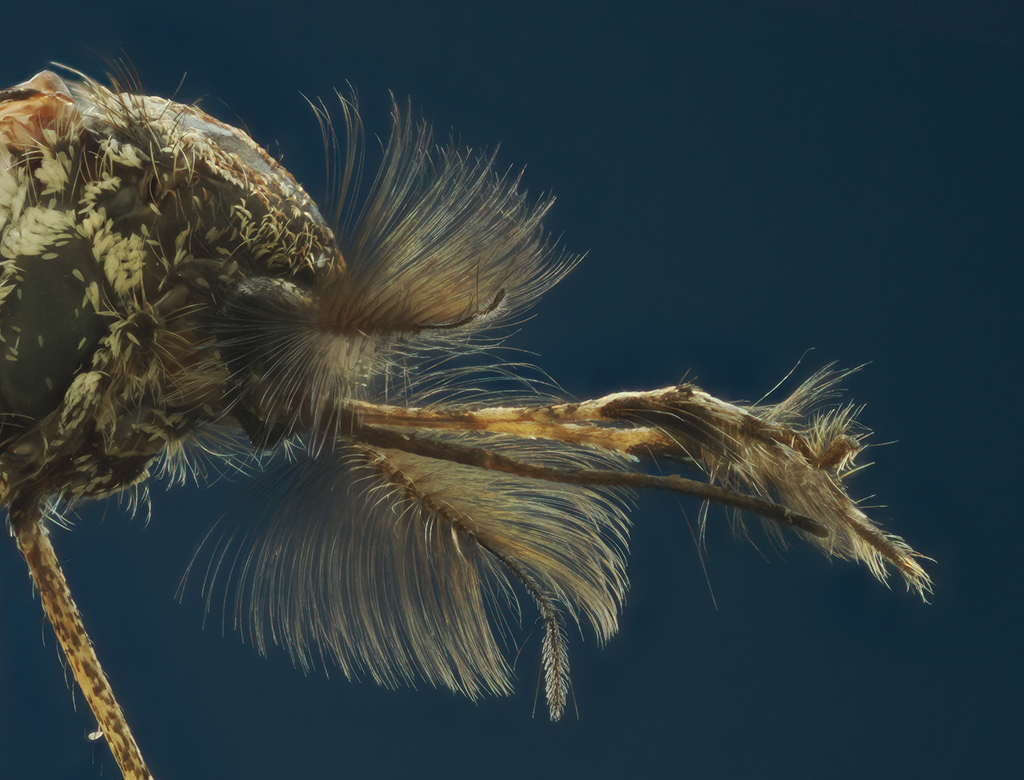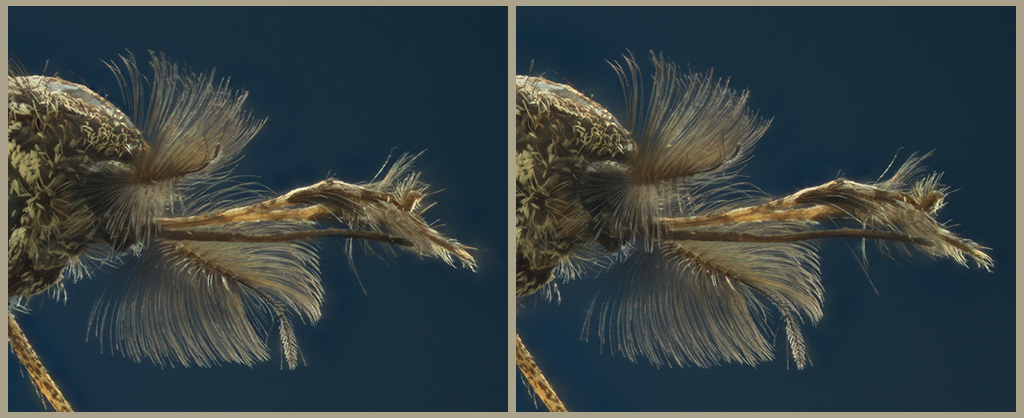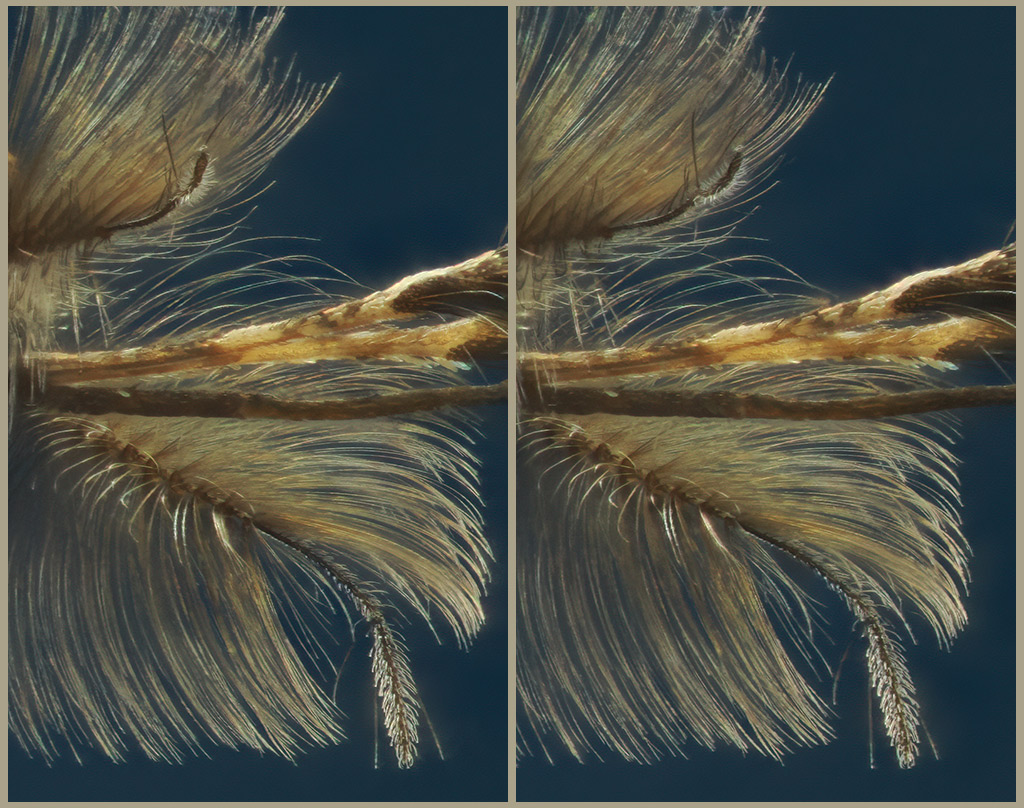In a broad brush view, the male listens for females using his antennae which are tuned to mechanically resonate with the frequency of the female's wingbeats. On closer study, things can get even more interesting. See for example https://www.ncbi.nlm.nih.gov/pmc/articles/PMC2975882/ and https://www.sciencedaily.com/releases/2 ... 110014.htm .
Anyway this is a male, with big fluffy antennae and palps.

Crossed-eye stereo:

Crossed-eye stereo, closer:

Shot with Canon T1i using Componon 50mm f/2.8 at f/4, alone on bellows, extended to give about 3.47X magnification on sensor. Cropped for posting to about 4.7 mm field width in the first image here. 71 frames at 0.05 mm focus step. Main illumination by a single flash from behind and above at 1/2 power, diffused through a piece of paper. Most of the front fill is reflection from the inside of a hemispherical diffuser; slight additional fill from two flashes in front at 1/64 power. Background is a "night sky", made by printing a severely underexposing photo of a normal daytime blue sky.
--Rik
